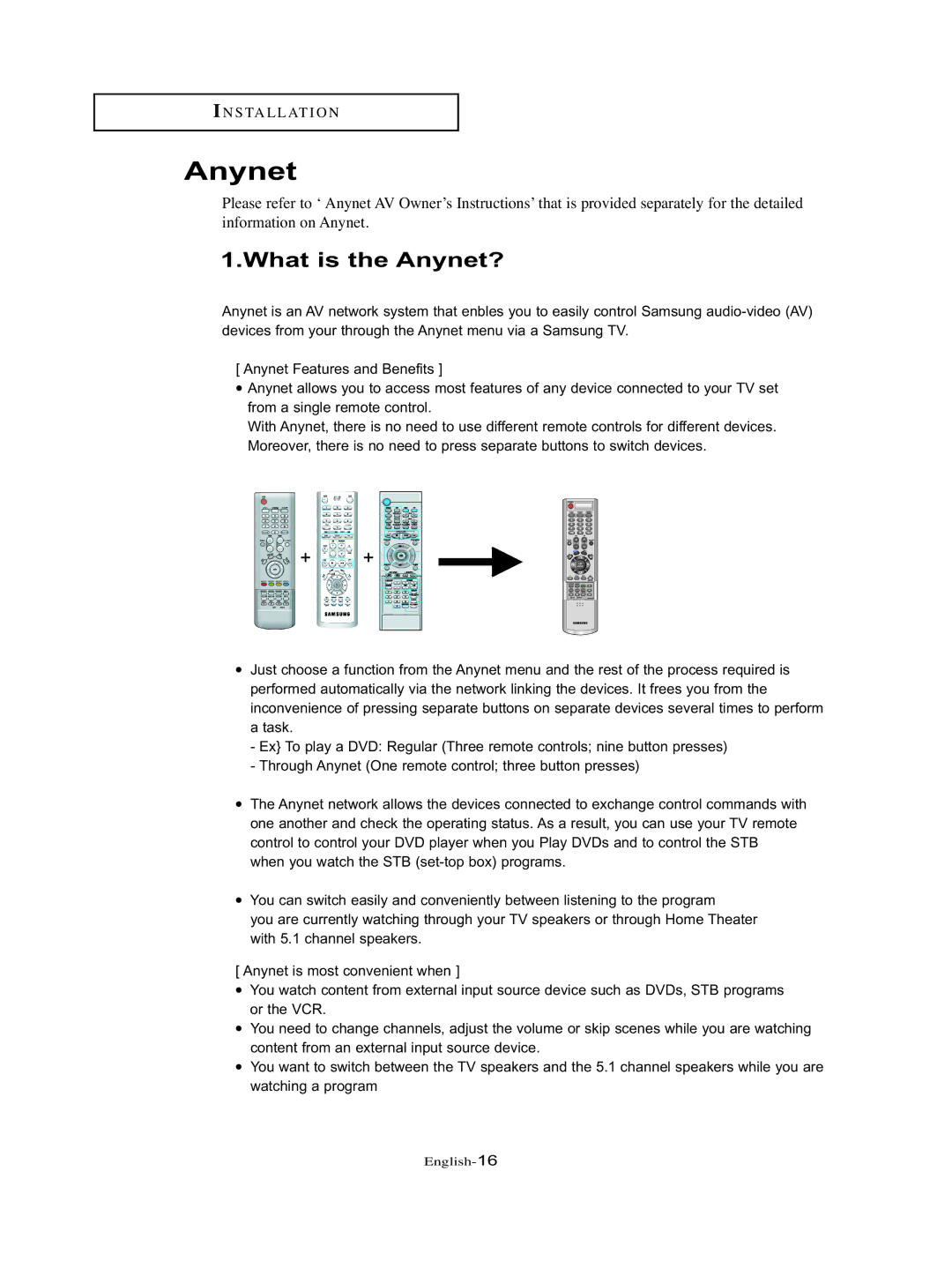
I N S TA L L AT I O N
Anynet
Please refer to ‘ Anynet AV Owner’s Instructions’ that is provided separately for the detailed information on Anynet.
1.What is the Anynet?
Anynet is an AV network system that enbles you to easily control Samsung
[ Anynet Features and Benefits ]
•Anynet allows you to access most features of any device connected to your TV set from a single remote control.
With Anynet, there is no need to use different remote controls for different devices. Moreover, there is no need to press separate buttons to switch devices.
++ 




•
•
•
Just choose a function from the Anynet menu and the rest of the process required is performed automatically via the network linking the devices. It frees you from the inconvenience of pressing separate buttons on separate devices several times to perform a task.
-Ex} To play a DVD: Regular (Three remote controls; nine button presses)
-Through Anynet (One remote control; three button presses)
The Anynet network allows the devices connected to exchange control commands with one another and check the operating status. As a result, you can use your TV remote control to control your DVD player when you Play DVDs and to control the STB when you watch the STB
You can switch easily and conveniently between listening to the program
you are currently watching through your TV speakers or through Home Theater with 5.1 channel speakers.
[ Anynet is most convenient when ]
•You watch content from external input source device such as DVDs, STB programs or the VCR.
•You need to change channels, adjust the volume or skip scenes while you are watching content from an external input source device.
•You want to switch between the TV speakers and the 5.1 channel speakers while you are watching a program
